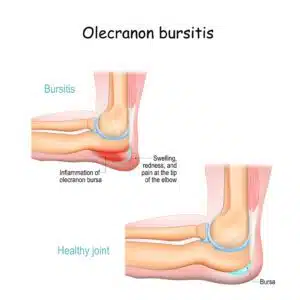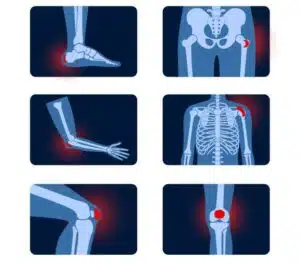Our hands are made up of many parts, like muscles, bones, tendons, ligaments, nerves, and other structures, which help our hands do a wide range of tasks – as big as holding a large object and as fine as typing. Problem or injury to any of these parts of the hand can cause hand discomfort…
Blog
4 Tips for Wrist Pain
Wrist pain or discomfort can keep you from doing things you want and need to do, such as typing, twisting a doorknob, high-fiving someone, or clapping. Acute wrist injury, arthritis, gout, and carpel tunnel syndrome are some of the many things that can cause wrist pain. Thankfully, you can ease your wrist pain by following…
Bursitis of Elbow – Treatment Option
Bursitis of the elbow, also known as olecranon bursitis, is a painful condition that can make it very hard for you to use your elbow like you usually can. In elbow bursitis, a fluid-filled saccushions your elbow joint gets irritated or inflamed. Inflammation of the olecranon (elbow) bursa can occur for many reasons, including repetitive…
Bursitis: Signs, Causes, and Treatments
Bursitis is the painful swelling of a small fluid-filled sac called the bursa, which is present in the joints. These fluid-filled sacs cushion the area where bone would otherwise rub on the tendon, muscles, or skin. There are more than 150 bursae present throughout the body, but inflammation mostly occurs in the bursae that are…
Cures for Bursitis in Knees
There are many possible causes for the pain and inflammation around the knee joint. One of those is knee bursitis – a condition in which the tiny, fluid-filled sac around the knee joint gets inflamed. Usually, knee bursitis occurs due to overuse or injury, but an infection in the knee may also result in knee…
5 Tips For Arthroscopic Knee Surgery
Arthroscopic knee surgery is a minimally invasive surgical procedure used to diagnose and treat problems with the knee joint. The most common reason for arthroscopic knee surgery is to repair a torn meniscus, but it can also be used to treat other conditions such as arthritis or ligament damage. Here are 5 tips for successful…
Wrist Pain: How To Relieve It
Wrist pain is a common problem that can be caused by a variety of factors, including injury, arthritis, and repetitive stress. There are many things you can do at home to relieve wrist pain and prevent further damage. Below are some of the things you can do to relieve wrist pain. Remember, if your symptoms…
Tips for Relieving Hand Pain
If you are one of the many people who suffer from hand pain, you know how frustrating it can be, as you use your hands heavily throughout the day. The good news is that there are some things you can do to relieve the pain. In this article, we give you 5 tips for relieving…
Wrist Pain: What You Should Know
There are many Americans that deal with wrist pain on a daily basis. According to the American Academy of Orthopaedic Surgeons, wrist pain is one of the most common reasons why patients see an orthopedic surgeon. Orthopedic surgeons are highly trained in the treatment of bone, joint, and soft tissue conditions and injuries. Wrist pain…
What Causes Hand Pain and How Can I Relieve It?
Hand pain can have many causes, but there are some common reasons why it might occur. It could be a minor sprain – maybe you overworked your hands from typing or doing chores – or it could be a more serious condition, possibly the early stages of arthritis. Possible causes of hand pain include arthritis,…











